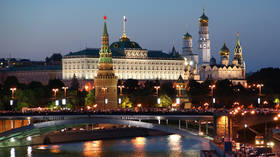Survival genes: Scientists find DNA mutations that helped Russians during Leningrad siege

Analysis of the genome structure of Leningrad siege survivors and their contemporaries has allowed Russian scientists to spot specific DNA mutations that helped people to live through one of the most tragic chapters of the WWII.
A team of researchers took blood samples from Leningrad siege survivors to analyze the structure of the genes involved in metabolism and cell activity when facing severe food shortages. They compared their findings with genetic samples of elderly Russians who did nt live through similar horrors.
Many siege survivors who suffered the worst turned out to have a completely different structure of two genes related to PPAR (peroxisome proliferator-activated receptors) proteins, and one from the UCP (uncoupling proteins) gene family, which play major roles in development, metabolism and thermogenesis of higher organisms.
The inhabitants of the besieged city, now known as St. Petersburg, had these genes undergo a mutation that increased the efficiency of the cells’ activities and reduced the loss of energy invested in keeping the body warm, according to an article, recently published in the journal Science.
READ MORE: 872 days of cold, hunger & death: Leningrad siege survivors share memories with RT
The project started about 15 years ago, when professor Oleg Glotov from the Ott Research Institute of Obstetrics and Gynecology in St. Petersburg, along with his colleagues, decided to study the problems of aging and longevity.
They collected some 200 blood samples of the aged, noticed some intriguing differences and decided to narrow their research to focus on the toughest ones – those people, who survived the siege and whose diet was limited by the harsh conditions of wartime.
“Genetic predisposition alongside with other factors was that very sieve which those siege survivors had to pass and managed to survive in that demanding environment. Absolutely, those genes did nt emerge by chance, in other words, those people already had them,” Glotov told RT. “About 20 to 30 percent of the population has those markers.”
“In harsh conditions they presented an advantage. In a stuffed environment, vice versa, they will be a disadvantage: in the case of overeating they will contribute to the accretion of energy in the form of fats, etc.,” he added.

For 872 days, from September 8, 1941 until January 27, 1944, residents of the Russian city of Leningrad were encircled by Nazi forces, cut off entirely from the rest of the country – with no food or vital supplies to rely on. The city was constantly bombed and people died continually of starvation and extreme cold. The harrowing winter of 1941-42 saw temperatures plunge to 40 degrees Celsius below zero, and with no heating Leningrad’s water supply network had frozen solid. People had to collect water from holes in the ice on the frozen Neva River.
Residents endured unprecedented food shortages, and a strict rationing system was in place in the city with individual daily food consumption limited to some 125 grams of bread. At one point the death toll was estimated at 100,000 people per month, with many forced to eat pets, rats or glue. Many were driven to madness while some resorted to cannibalism.
While the total death toll still remains unclear, estimates of the victims from the deadliest siege in the history of warfare vary, with some numbering up to 1.5 million civilians.
Scientists hope their findings may be useful in developing ways to combat obesity, anorexia and other disorders related to the metabolism.
“We would like to proceed with this research. At the moment in collaboration with Saint Petersburg state university a large biobank of samples is being created,” Glotov said.
“And we would like for this severest experiment and the experience that our fellow citizens and those who survived in those conditions got to make a contribution – not only as themselves or by the means of their children, but also as some samples of material, useful for science, which we could study further and determine the peculiarities of this phenomenon.”












